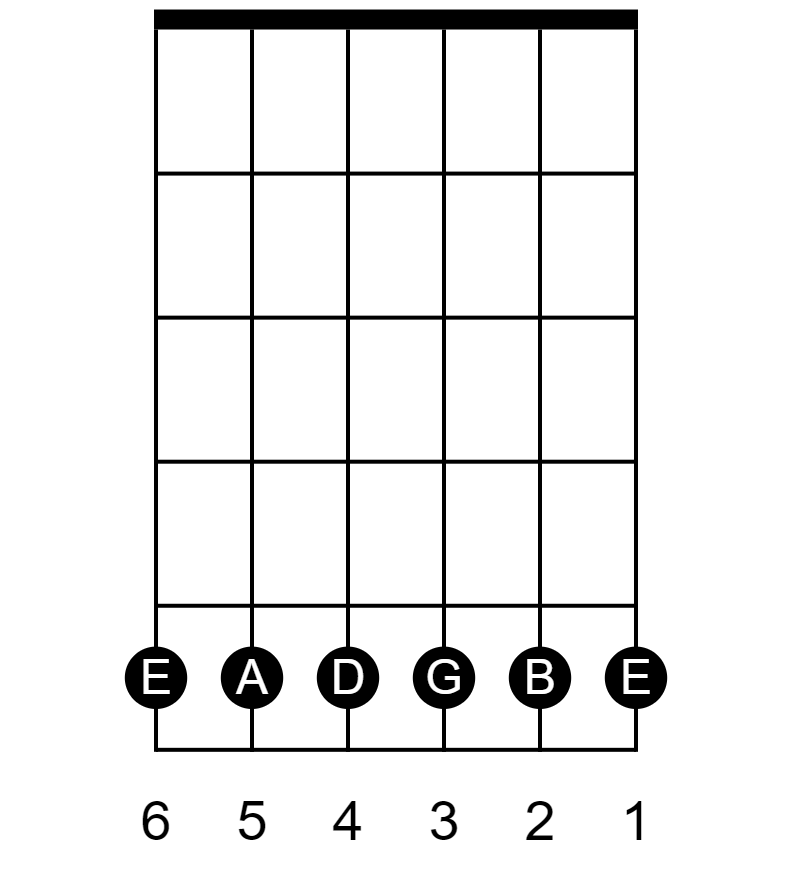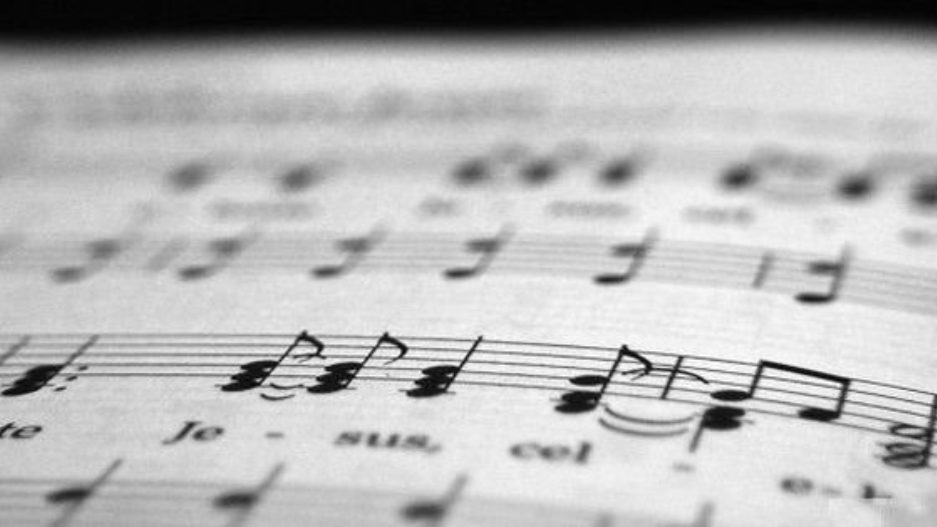When looking straight at your guitar from the front, notice the string all the way to the left is big and thick, whereas the string all the way to the right is much thinner. This difference in string thickness is used to produce very different pitches, where thicker strings create low pitches and thinner string create high pitches.
The six strings of the guitar are each given a number, starting with the thinnest string progressing to the thickest string. Each string also has a letter name, and in the case of the two string we have discussed, both are named E. Sometimes these two E strings will be differentiated by being called “high E” and “low E”, where high refers to the thin E and low refers to the thick E.
[br]

When holding the guitar in standard posture, resting on your leg, the sixth string should be closest to the ceiling and the first string should be closest to the floor.
Try to memorize these string numbers and letter names, as these will be used heavily when reading guitar music or verbally discussing the guitar during lessons.
[br][br]
